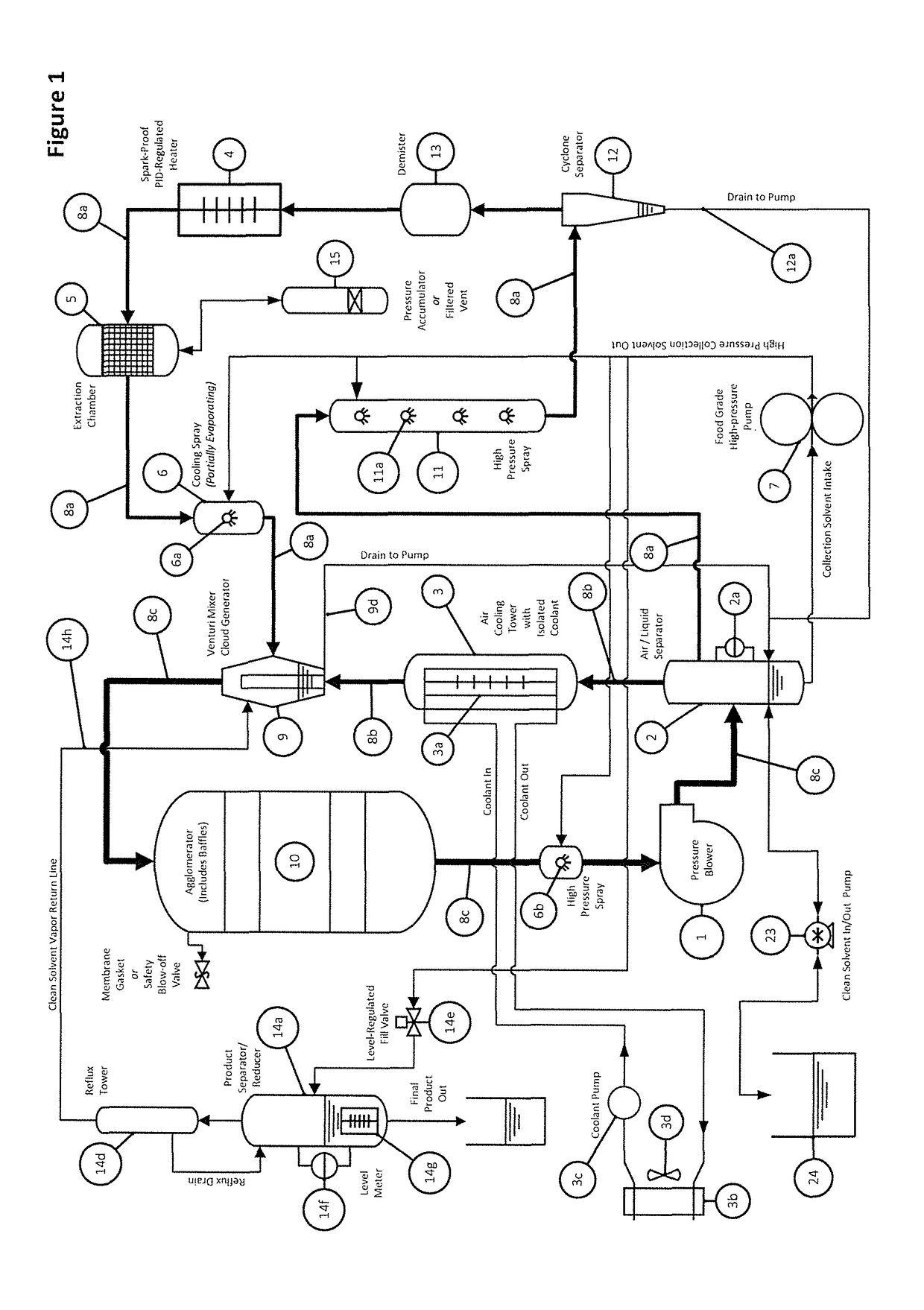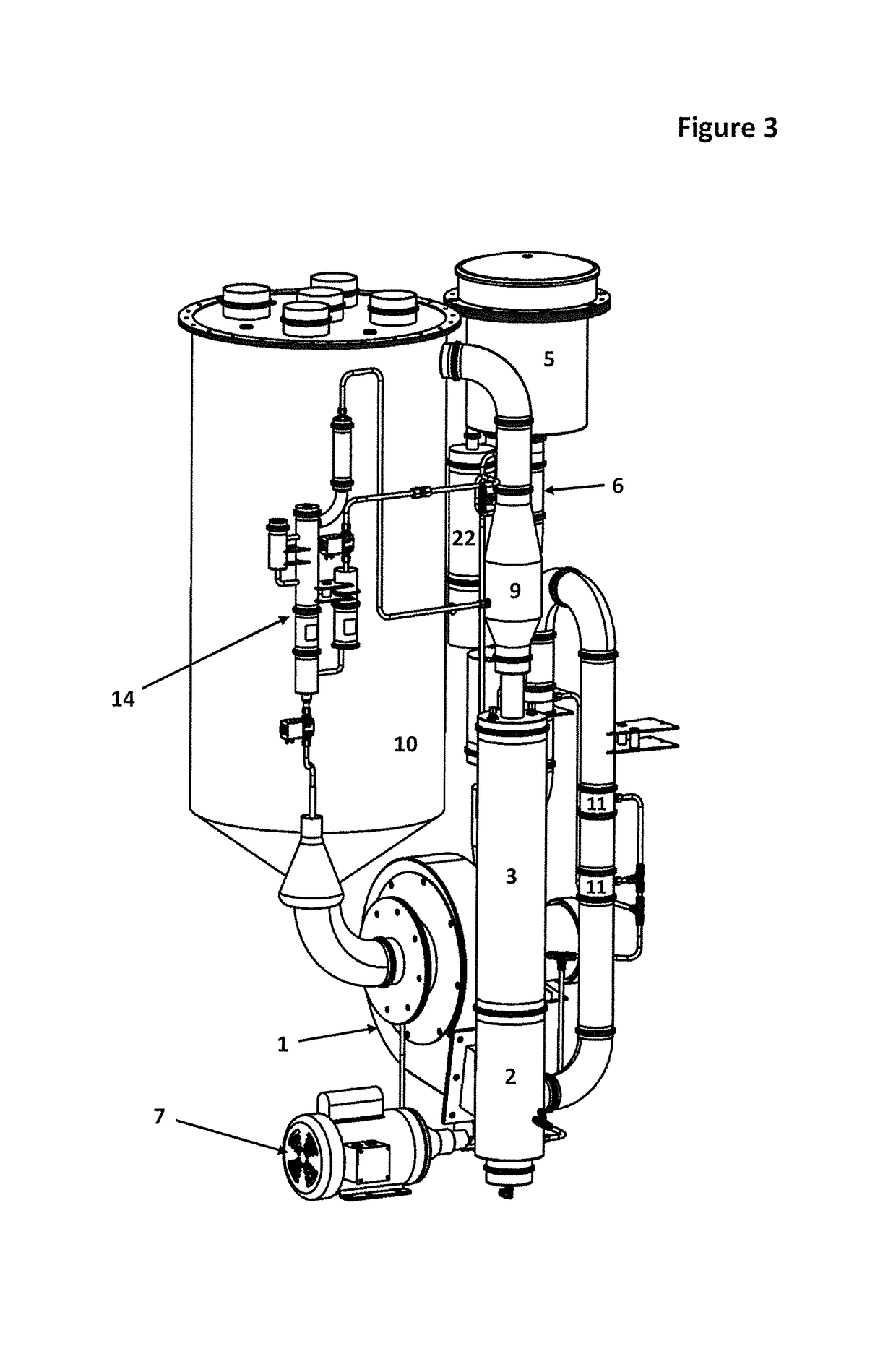Method and apparatus for extracting botanical oils
a botanical oil and extraction method technology, applied in solvent extraction, evaporation, separation processes, etc., can solve the problems of compromising purity, smell and taste, slow and expensive process, etc., to achieve high purity, fast and effective, the effect of improving the purity
- Summary
- Abstract
- Description
- Claims
- Application Information
AI Technical Summary
Benefits of technology
Problems solved by technology
Method used
Image
Examples
Embodiment Construction
[0141]The Nature of the Materials Extracted
[0142]The systems illustrated and discussed herein present methods of extracting one or more specific saps, resins, oleoresins, lipids, terpinoids or otherwise volatilizable constituents within a plant material that is being processed. Such constituents are often referred to generically in this disclosure as singular or plural forms of the words “oil” or “plant oil”, although other names may be used. It should be known that singular or plural forms of the word “plant material” may refer to raw plant materials that are either wet or dry, or to partially-processed plant materials or plant oils, with partially-processed meaning that the plant material being processed may have been previously conditioned, partially striped of it oils during a previous extraction using the methods discussed herein or other known methods, or that the plant material being processed has previously been processed to have a greater concentration of oil than would nat...
PUM
| Property | Measurement | Unit |
|---|---|---|
| diameter | aaaaa | aaaaa |
| diameter | aaaaa | aaaaa |
| volatilization temperature | aaaaa | aaaaa |
Abstract
Description
Claims
Application Information
 Login to View More
Login to View More - R&D
- Intellectual Property
- Life Sciences
- Materials
- Tech Scout
- Unparalleled Data Quality
- Higher Quality Content
- 60% Fewer Hallucinations
Browse by: Latest US Patents, China's latest patents, Technical Efficacy Thesaurus, Application Domain, Technology Topic, Popular Technical Reports.
© 2025 PatSnap. All rights reserved.Legal|Privacy policy|Modern Slavery Act Transparency Statement|Sitemap|About US| Contact US: help@patsnap.com



